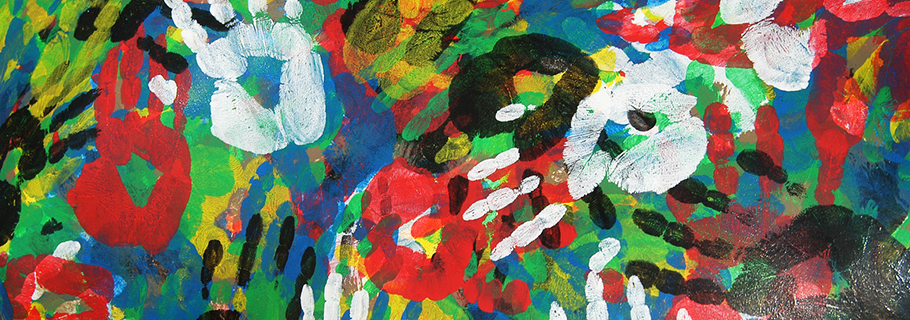There are many benefits to living in Toronto, but perhaps none so exciting and fascinating as living in the world’s most diverse city. Over the past few decades the world has come to Toronto so that today more than half of its residents were born in a different country and those who identify as Caucasian compose a minority. This has given Toronto’s churches new opportunities to learn to pursue Christian unity in a context of great diversity. This was my theme for the recent G3 Conference and in my preparation I found myself transfixed by three vivid images that portray a biblical vision of unity in diversity.
We find these images in the second half of the second chapter of Ephesians. There Paul essentially tells a story that unfolds through three scenes. An appropriate title for the first scene, which is described in verses 11 and 12, might be “division.”
Scene 1: Division
Paul is speaking to believers here, but he asks them to “remember,” to think back to who and what they were before God’s miraculous, saving work in their lives. And these are not cheery memories.
He first reminds them they were divided. Jews and Gentiles were divided from one another. There was very much an “us and them” mentality where each group hated the other. Humanity was divided from humanity. But it was even worse than that. Humanity was also divided from God and Paul unfolds this in a series of key words. They were separated from Christ and all the goodness and grace that is in him. They were also alienated from the commonwealth of Israel. God dispensed his covenant blessings to those who were citizens of his nation, and the Gentiles were outside of it. Therefore, they were strangers, strangers to the covenants of promise. It makes sense then that they were hopeless—they had no hope in the world. Finally, worst of all, they were Godless. They had forsaken God and so were forsaken by God.
This is an ugly scene that describes the horrifying state these people were in and, from there, the horrifying state we are in without Christ. Outside his grace we are scorned, separated, alienated, strangers, hopeless, godless. Paul wants us to remember all this because this is the great leveling. This reminds us we are all deeply sinful and that no one people, nation, or group stands above any other. If we are to enjoy any blessings at all, especially the gift of unity, it must be a gift of grace.
So, the first scene is one of humanity divided from God and one another.
Scene 2: Jesus
Then, in verses 13 to 18, the curtain falls and rises on a second scene, a scene of Jesus. Here we come to two precious little words: “but now.” “But now in Christ Jesus you who once were far off have been brought near by the blood of Christ” (13). We have leapt from past to present, the way things were to the way they are.
God did not leave us in our state of warfare and alienation but sent his Son to reconcile us first to God and then to one another. The vertical reconciliation enables and necessitates a horizontal one. It is not difficult to discern the theme in these few verses:
- “He himself is our peace, who has made us both one“ (14).
- “that he might create in himself one new man in place of the two” (15).
- “that he might reconcile us both to God in one body through the cross, thereby killing the hostility” (16).
Paul’s point is clear: The work of Jesus is all about unity! The existence of division is proof that we haven’t yet fully worked out the implications of the gospel.
In the death and resurrection of Jesus Christ, God created one new race, one new people, that supersedes all others. This means the core of our identity is not Jew or Gentile. It’s not black or white, male or female, culture or place of origin. The core of our identity and the one that unites us all is “Jesus Christ.” All those other distinctions still exist and still matter—God has a glorious purpose in two genders, in many races, in myriad ethnicities. God’s purpose is not to destroy distinction but to destroy division. It’s not to promote uniformity but to promote unity.
Our only hope for true and deep and lasting unity in diversity is the gospel of Jesus Christ! God receives all the glory when he so transforms people that their deepest divisions are willingly set aside and swept away by love.
Scene 3: Unity
Now we move to scene number 3. The curtain falls and rises on a scene of a united humanity. There is a clear flow to this unfolding story: We have division, then Jesus, then unity.
Now Paul teases out the implications of what Christ has accomplished. The scene he describes provides these three vivid images of unity in diversity. It’s like the curtain has risen and before us is a stage with three separate sets on it, each one different, but each one making the same point.
Citizens of a Nation. On the left of the stage is a nation with its citizens. There were once two groups in this country—citizens who were the insiders and strangers and aliens who were the outsiders. They were once deeply divided from one another, but now the strangers and aliens have been drawn in and granted all the rights and privileges of citizenship. And there they stand now, all of them together and equal, standing and honoring the king. Division, Jesus, unity.
Children of a Family. On the right of the stage is a family—a father with his children. We learn that some of these children are adopted and some are biological. Both are completely equal in the eyes of their father. Both are equally loved, treasured, and precious. The inheritance of the father is equally divided among them all. This is God’s household. Division, Jesus, unity.
Bricks of a Building. Then we look to the center of the stage and we see a building. This was once a chaos of isolated bricks, stones, and building material scattered around a construction site. Now it’s a temple fit for God himself. The apostles and prophets are the foundation upon which it’s all built. Jesus Christ is the cornerstone, and without him the whole building would collapse. And what is this temple made up of? Us! All of us! We are the stones and bricks that make up the temple. From isolated bits of building material, to a gorgeous temple. Division. Jesus. Unity.
There are our three scenes of unity in diversity: A nation assembled before its king; a family gathered before its father; a temple constructed for God himself. What has God done? He has taken us from division to unity and he has done it through Jesus Christ. This is his promise. This is his purpose. This is his glory!










